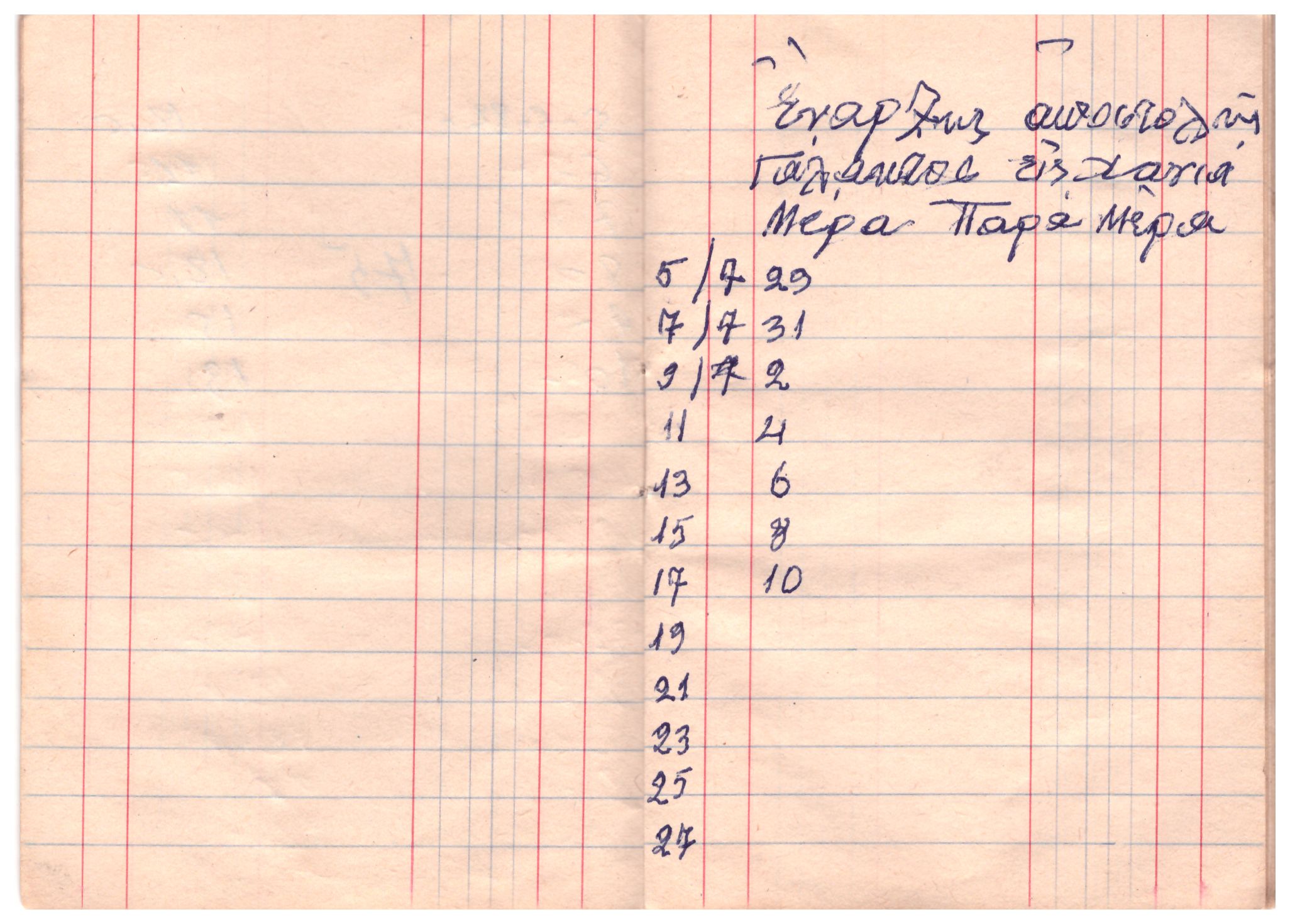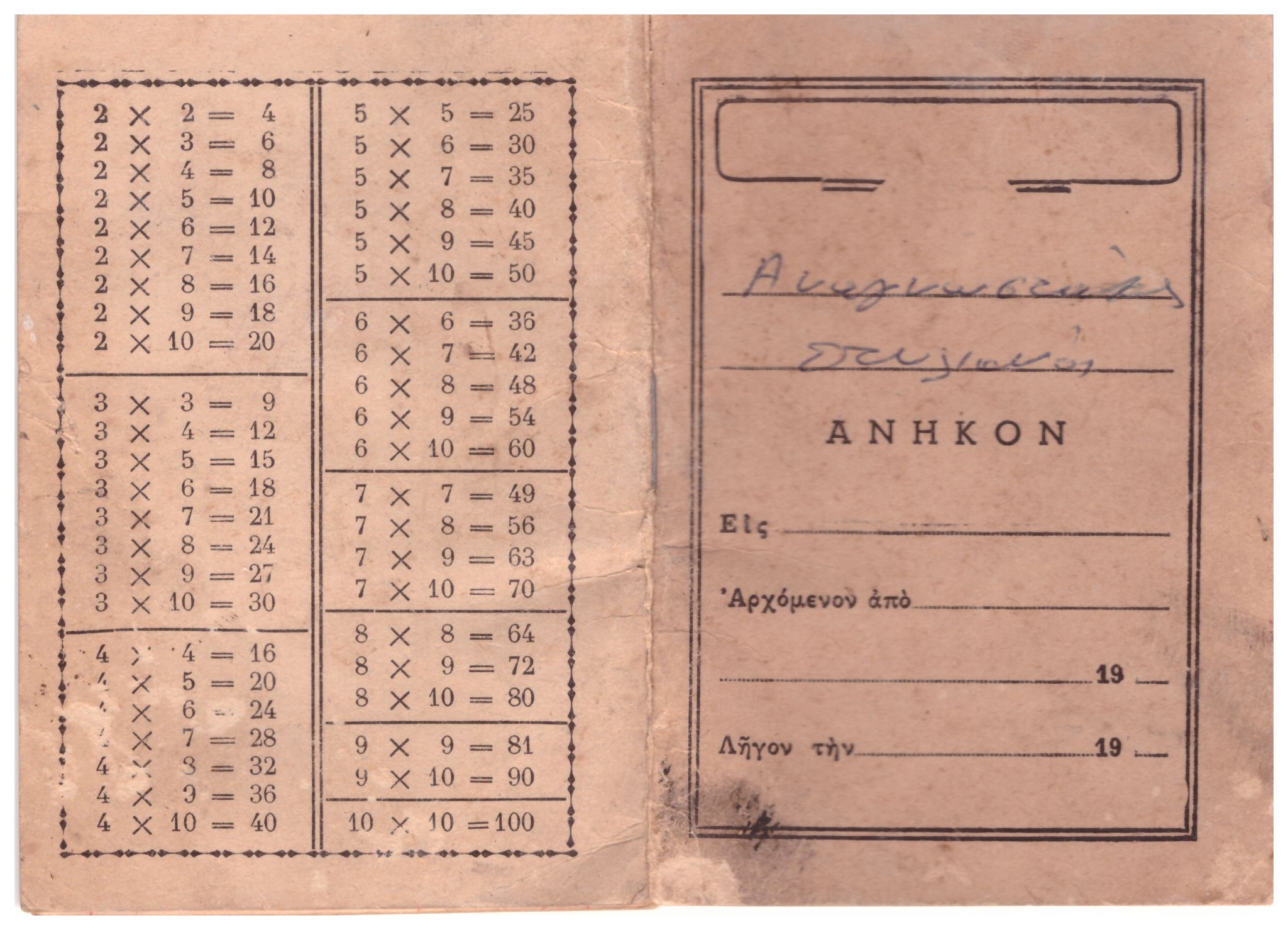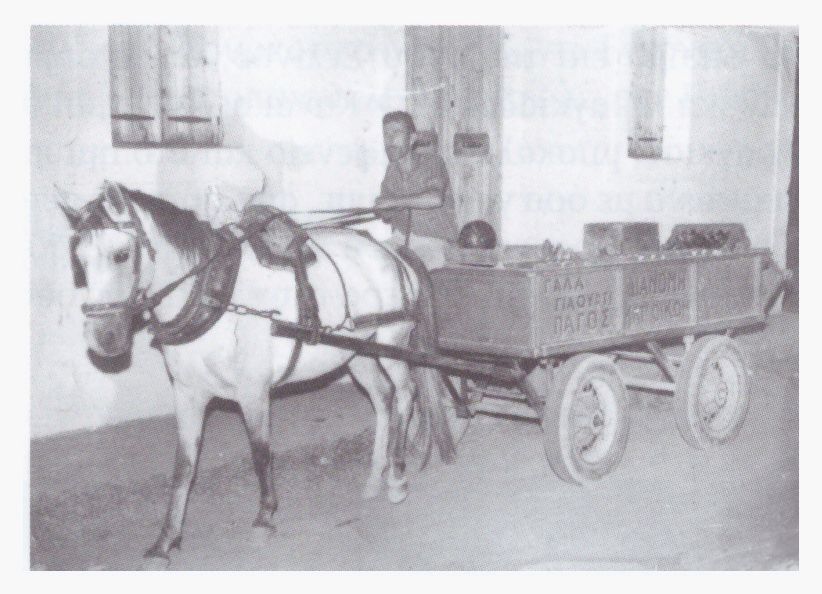Small refugee shops
As seen in the photograph from the 1960s, it operated as a ‘coffee, dairy and pastry shop’. Old residents remember that it was called ‘Vania’s dairy shop’.
Its owners worked with producers from all over the prefecture, buying their milk, processing it and selling it along with various dairy products. Manolis Anagnostakis remembers that in the 1960s and ‘70s, his father, Stelios, sold sheep milk produced at his village, which is called Panethimos and is located 40 kilometres from Chania, to the Kouroutidis dairy shop.
‘There were two milkmen who picked up the milk themselves […] but Kouroutidis offered a better price. He would cover the transportation expenses, which were ridiculously low, I doubt it was more than 2 or 3 drachmas per day, maybe 5, so the cost was easily covered by the difference in price. We sold our milk to him because he was safer and more consistent in his payments, God rest his soul, because he paid cash. The others had to first make the cheese, then sell it, and we ended up waiting months to get paid, so we found our solution in Chania. […] We had two large containers made in Chania […] and the system worked perfectly! One container left filled with 10, 15, 20, 25 kilos of milk, it would arrive at Chania, Kouroutidis would pick it up […] empty it and return it using the bus.
There was a notebook… every time my father or I would go to settle our account, he would draw a line up to the day when you showed up and added up the total weight of the milk he had bought. If it cost, let’s say, 600 euros and you had already been paid 100, he would give you the rest. And then you started writing again, recording the date and the number of kilos sold, over and over.
He first sold as much milk as he could and the rest he used to make yoghurt. He didn’t make cheese, he didn’t have the space, but he made amazing yoghurts. […] He only had two small rooms and one was used to light a fire. He needed fire because the milk has to be boiled to make yoghurt, so he had two, maybe more, huge clay stoves that burned wood, and I’m not sure, but he must have had two pots permanently attached to the stoves, built onto them, and that’s where he would pour the milk, boil it, then let it cool a little, add the yeast and make yoghurt. I also remember he had a table covered in small clay yoghurt pots that he used to fill with milk and make yoghurt. I was impressed, they looked really good.’
The shop operated until the end of the 1970s when it changed management. It was then run by a family of native Cretans for a few years. Today, the building has been demolished and part of the lot has been turned into green space while the rest is occupied by a retail store.
Objects




